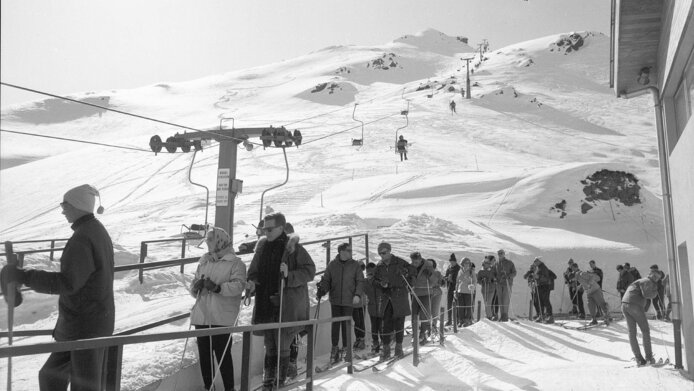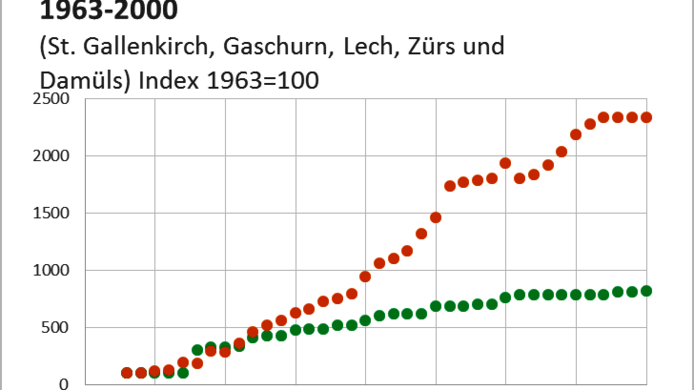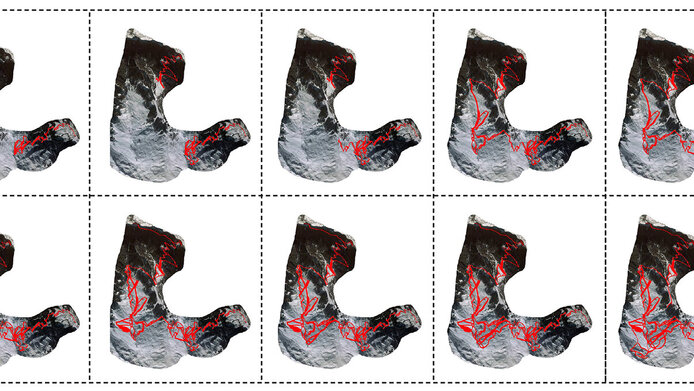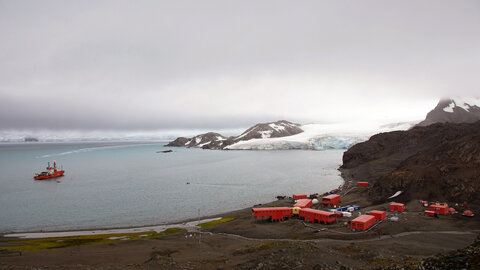Winter tourism in a growth spiral

The promise of winter holidays for everyone makes the Alps an ecologically vulnerable area. Winter tourism in Austria turns Alpine valleys into industries. That has been highlighted in a project, funded by the Austrian Science Fund FWF and led by the environmental historian Verena Winiwarter, which focused on the development of winter tourism in the 20th century. According to Winiwarter, the project How skiers’ sensations shaped Alpine valleys during the 20th century fills a research gap: “Environmental history needs to focus on those social spheres that have a big impact on their respective environment", says Winiwarter in the interview with scilog. "The forces involved differ from region to region and from country to country. For Austria’s environmental history we have to examine tourism which makes intensive use of the countryside as a resource, just like agriculture and forestry.” The FWF project was conducted between 2012 and 2015 by the human ecologist Robert Groß. He sought out historical sources concerning the ecological, social and economic dynamics of winter sports from 1920 to 2010 in three communities in Vorarlberg. For his case studies he chose Gaschurn and St. Gallenkirch in Montafon (Silvretta-Nova), a mid-size skiing area with good transport links; Lech am Arlberg, a well-developed, large and internationally renowned ski resort serving as a model for other regions; and Damüls, an area rich in snow at the border between Bregenzerwald and Großes Walsertal, a latecomer with no roads that could safely be navigated in winter until the 1950s. “The three regions enable us to draw conclusions for ski resorts all over Austria”, notes Robert Groß from the Centre for Environmental History at the Alpen-Adria-Universität Klagenfurt.
The development phases of winter tourism
Back when winter sports were still a rather exclusive pastime they did not present any obstacle to agriculture and forestry. Around 1920, the inhabitants of the three selected communities worked mostly in alpine farming, in the electricity sector, the timber industry or in goods transport by mule. A lack of foreign exchange, the worldwide economic crisis and the ideological boost given to ‘Nordic’ nature resulted in an upswing for winter tourism as a new source of revenue. Over time, focusing on the needs of the winter guests not only transformed the slopes but also the social fabric of the villages. The transition from a few individuals on ski tours to massive numbers of skiers fostered by the advent of mechanised ski lifts had drastic consequences. Austria’s first T-bar lift was erected in Lech am Arlberg in 1937. From the 1950s onward, many ski lifts were built on the basis of cheap loans from the European Recovery Program (Marshall Plan). To provide the rest of the required infrastructure, however, the local authorities had to make big investments. By the time the nature protectionist movement gained ground in the 1970s, the ski slopes had irrevocably become a focus of social friction.
Postcard idylls and retired drivers of snow groomers In his search for significant political and economic influences, Robert Groß explored a wide variety of historical records: Austrian cable car statistics, tourism brochures, postcards, photo archives, newspapers, specialised journals and maps. He interviewed retired drivers of snow groomers and other contemporary witnesses. After a quantitative analysis of piste kilometres and lift installations, the environmental historian also identified the key factor of the modernisation spiral which still drives skiing areas today: the continuous increase in transport capacity. Then as now the value creation chain of the skiing industry depended on the number of people transported up the mountain per minute. The FWF project demonstrates “that the shaping of the countryside and the development of winter sports tourism go hand in glove”.
Factories of tourist satisfaction
The results of the study suggest a comparison between skiing areas and factories, with the ski lifts acting as conveyor belts: “In winter tourism we detect an industrial fabric developed according to efficiency criteria, the product being ‘tourist satisfaction’”, explain Verena Winiwarter and Robert Groß. By harnessing steadily increased funds, natural resources, people and machinery, the resorts heightened the efficiency of the ski tourism techno-sphere. The ski pistes are transformed into a ‘socio-natural hybrid’, with the sloping pastures under the snow being the sole natural element. But the pastures also need to be taken care of the whole year round. Sophisticated equipment and a great deal of resources are required to make sure these surfaces will be white in winter and green in summer. Environmental history projects “have taught us that societies are not blindly headed for disaster. They learn from mistakes and take countermeasures. By looking back we have provided them with an important basis for decisions. We are not merely criticising progress”, emphasizes the principal investigator Verena Winiwarter, who also advocates transfer projects. Some local communities in Vorarlberg have already recognised that growth is not the only option and that winter guests appreciate a variety of touristic experiences in alpine valleys.
Personal details Verena Winiwarter is a professor of environmental history at the Institute of Social Ecology at the Vienna branch of the Alpen-Adria-Universität Klagenfurt. Winiwarter has led several interdisciplinary FWF projects. She is a former dean (2010-2016) of the Faculty of Interdisciplinary Studies and was Scientist of the Year in 2013. Together with Hans-Rudolf Bork she co-authored Geschichte unserer Umwelt. Sechzig Reisen durch die Zeit, which was named Environmental Book of the Year in 2015. Robert Groß studied Interdisciplinary Environmental Science at the University of Vienna and at Alpen-Adria-Universität Klagenfurt. Between March 2012 and December 2015 the researcher was involved in the FWF project How skiers’ sensations shaped Alpine valleys. In 2013, Groß was appointed co-ordinator of the Centre for Environmental History at the University of Klagenfurt.
Publications







